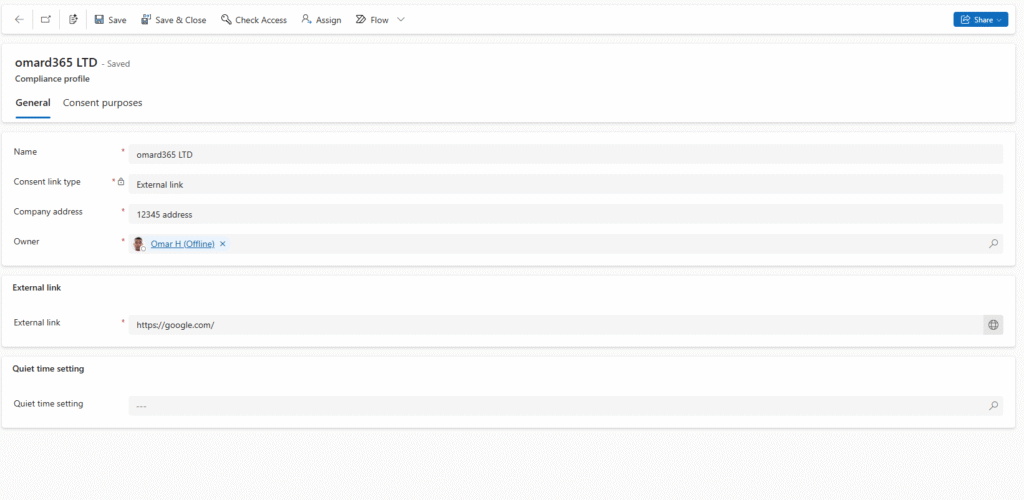Did you know that for a contact to receive a notification such as emails or SMS, they need to be opted into a commercial or transactional compliance profile? In this guide, I’ll walk through what a compliance profile is in Customer Insights – Journeys, the types of profiles you can configure, the different communication purposes, and how to set them up.
This guide is only relevant to real-time marketing. Outbound marketing is being deprecated on 30 June 2025, so it’s a good time to start planning your transition if you haven’t already.
What is a Compliance Profile?
A compliance profile in Customer Insights Journeys is where you manage how consent is captured and enforced when sending messages to contacts. Real-time marketing uses contact point consent, which means consent is tied to specific email addresses or phone numbers, not the entire contact record. This gives you more control and precision when managing communications.
What Are the Two Types of Compliance Profiles?
1. Compliance Profile Using the Preference Center.
The Preference Center is a built-in feature that lets your contacts manage their own communication preferences. This includes choosing the channels (like email or SMS) and the types of messages (like promotional offers or newsletters). It’s a flexible option that supports key tables such as contacts and leads.

2. Compliance Profile Using an External Link
This option is for organizations that manage subscription preferences using an external system. It provides a link for contacts to manage their consent outside of the Dynamics 365 environment.
My two cents: if you’re investing in real-time marketing, you’re probably better off using the built-in preference center. While migrating from an external system can be challenging, managing everything in one place will simplify your operations in the long run.

What Are the Three Communication Purposes?
When you create a compliance profile, you’ll also need to define communication purposes. Each message you send must be tagged with one of these purposes. Here’s a breakdown.
1. Commercial Purpose
Used for promotional or marketing messages. This requires explicit opt-in depending on the regulations in your country. If you’re sending:
Emails
SMS
Push notifications
Voice calls
Custom channel messages
Then you’ll usually need the contact to opt in first. These purposes often use the “Restrictive” enforcement model, meaning consent is required.
You can also assign topics to your commercial purpose. Think of topics as categories like “Weekly Deals” or “New Product Announcements”, so contacts can fine-tune what kind of marketing they want to receive.

2. Transactional Purpose
Used for messages related to purchases, registrations, or account activity. These usually do not require opt-in, because they are considered essential communications. For example:
A contact buys a product and gets a receipt
A contact registers for an event and receives the confirmation
This purpose often uses the “Disabled” enforcement model, meaning it bypasses consent checks. You can also assign topics here if you need to.

3. Tracking Purpose
This is used to manage consent for tracking user interactions, such as link clicks and email opens. Like the others, the enforcement level can be set to either disabled or restrictive. If restrictive, contacts must opt in to allow tracking via channels like email and SMS.

Final Step: Assign Purpose When Creating Email or SMS

When creating an email or SMS in real-time marketing, you must assign a communication purpose and optionally one or more topics. This ensures the platform enforces the correct compliance checks before sending the message.
Pro Tip: Consider enabling Double Opt-In for your compliance profile. This adds a confirmation step to make sure the contact truly wants to receive communications, which can help reduce spam complaints and improve deliverability.
